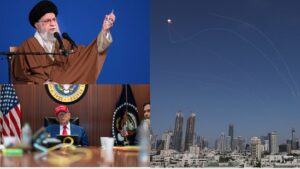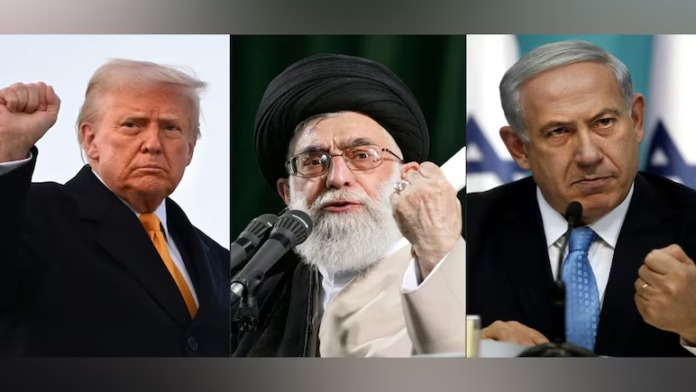
Washington/Qom, June 22 | Qalam Times News Network
In a dramatic escalation of Middle East tensions, U.S. President Donald Trump announced late Saturday night that American forces had carried out precision military strikes on three critical Iranian nuclear sites—Natanz, Isfahan, and Fordow. The operation, described by the President as a “remarkable success,” represents the most forceful U.S. military action in the region since the 2003 invasion of Iraq.
Addressing the nation in a terse three-minute statement from the White House, Trump declared that Iran’s major uranium enrichment facilities had been “completely and utterly destroyed.” The President warned, “This is a message. There will either be peace, or there will be consequences.”
He added a stern ultimatum: “Should Iran fail to comply, further action will be swift, precise, and resolute.”
Diplomatic Breakdown and Sudden Offensive
The strikes came less than a month after faltering diplomatic talks between Washington and Tehran in Rome, which marked the fifth round of negotiations this year. Central to the impasse were disagreements over Iran’s uranium enrichment levels and its existing nuclear material stockpile. Despite U.S. intelligence assessments suggesting Iran had not resumed weaponization efforts, President Trump dismissed these findings and signaled his growing dissatisfaction with diplomatic efforts.
Prior to the operation, the President had imposed a two-week deadline for Iran to dismantle its advanced centrifuge systems and surrender enriched uranium. Tehran’s refusal to yield to these demands reportedly triggered Washington’s decision to proceed with military options.
A Multi-Layered Attack
According to Pentagon sources, the overnight assault employed multiple military platforms. B-2 Spirit stealth bombers, each equipped with GBU-57 Massive Ordnance Penetrator bombs—specially designed to strike deep underground targets—targeted the Fordow facility, which lies beneath a mountain in Iran’s Qom province. At least half a dozen such munitions were deployed.
Concurrently, U.S. Navy submarines positioned in the Persian Gulf and Arabian Sea launched approximately 30 Tomahawk cruise missiles at the Natanz and Isfahan nuclear complexes—sites pivotal to Iran’s uranium processing and enrichment operations.
Iran’s Atomic Energy Organization (AEOI) acknowledged the attacks and confirmed that while structural damage occurred, there were no immediate reports of radiation leakage or civilian casualties. AEOI also emphasized that the strikes would not deter the continuation of what it described as “peaceful nuclear development.”
Trump’s Escalating Rhetoric
In the hours following the offensive, President Trump escalated his rhetoric on social media, calling for Iran’s “unconditional surrender.” In a series of emphatic posts, he warned Tehran’s leadership against retaliation. One post directly referenced Iran’s Supreme Leader, stating: “We know exactly where he is. He’s safe—for now.”
During an interview on Fox News shortly thereafter, Trump indicated that a decision had been made not to target Ayatollah Ali Khamenei directly, stating, “We had the capability to take him out. We chose not to—for now.”
A History of Fractured Relations
The latest confrontation is rooted in long-standing U.S.-Iran tensions. In 2015, the Joint Comprehensive Plan of Action (JCPOA) was signed, placing limits on Iran’s nuclear program. However, in 2018, the Trump administration withdrew from the accord, labeling it “a catastrophic deal,” prompting Tehran to resume its enrichment activities.
Subsequent years saw heightened hostilities, including the U.S.-ordered killing of Iranian General Qassem Soleimani in 2020, a series of cyberattacks, and multiple sabotage incidents attributed to Israeli intelligence services.
Earlier this year, the U.S. intelligence community—led by Director of National Intelligence Tulsi Gabbard—assessed that Iran had not restarted its nuclear weapons program since suspending it in 2003. The President, however, publicly disregarded the intelligence, asserting, “We’re done waiting.”
Regional Fallout
The American airstrikes follow more than a week of Israeli aerial bombardment of suspected Iranian military and nuclear sites across Syria and Lebanon, raising concerns of a wider regional conflict.
International observers and diplomatic circles are now closely monitoring Iran’s response, which could significantly influence the strategic dynamics of the Middle East.
Stay with Qalam Times News Network for the latest verified updates on this developing story.








gczwhz